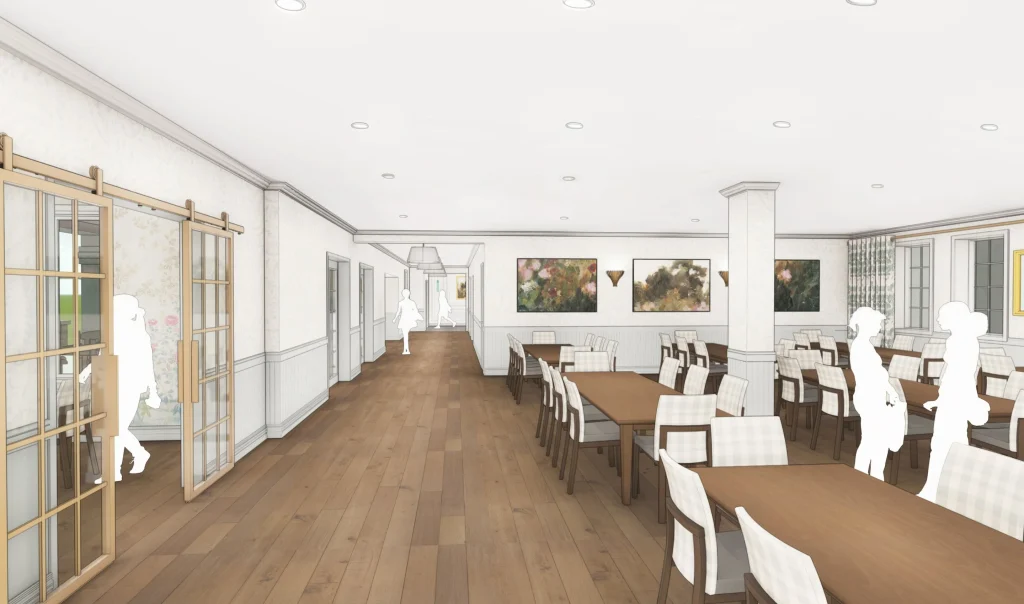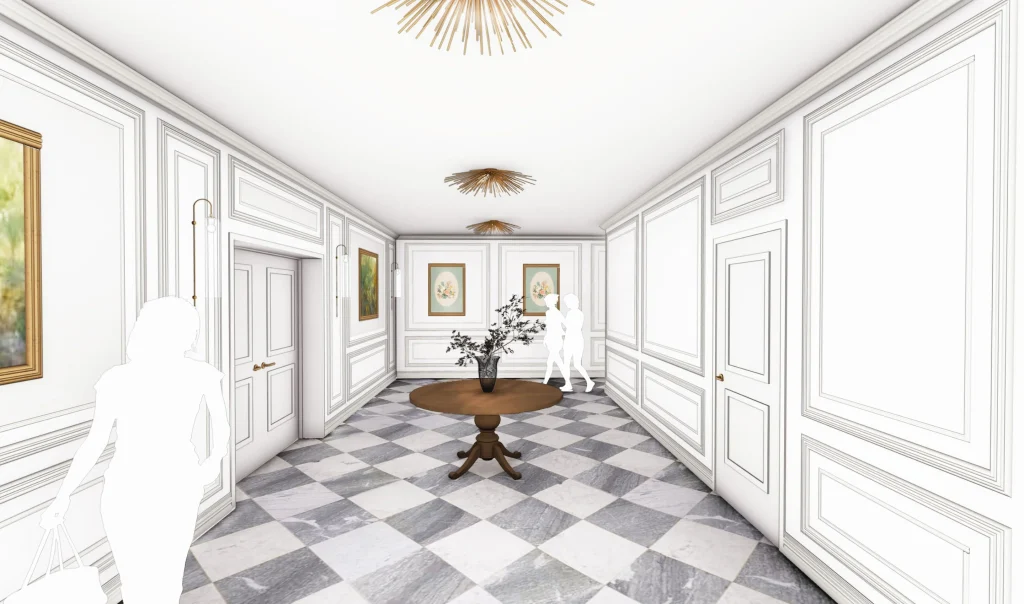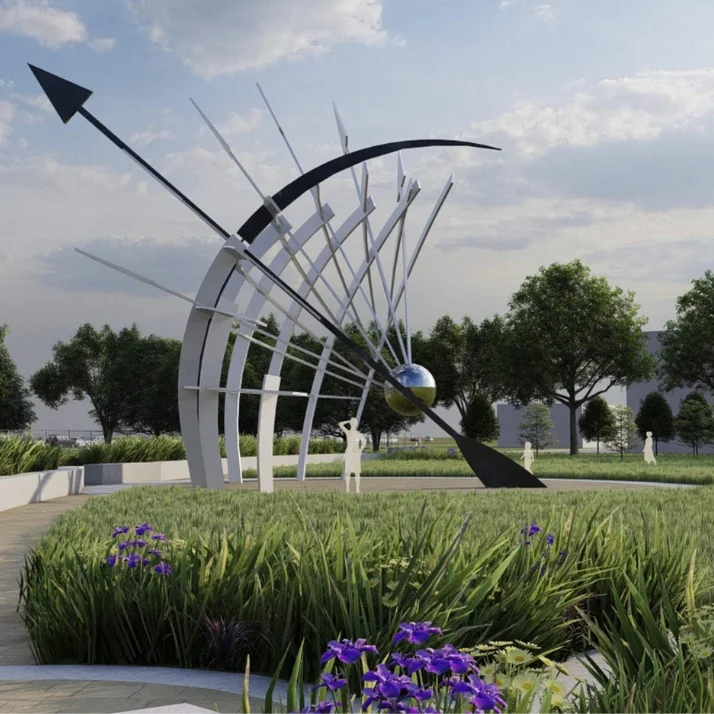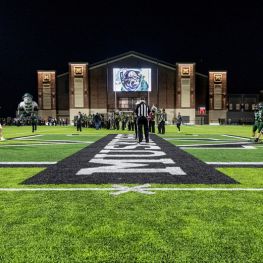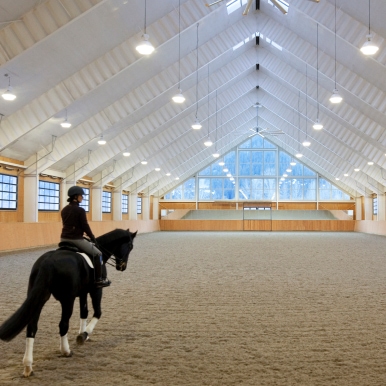September 3rd, 2022 | Ramsey Qubein – Forbes.com
Summer was a busy time for new hotel openings as well as numerous upgrades, renovations and promotions to entice eager travelers. Hotel leadership teams have their eye on new opportunities, too, including refreshed brands that can target travelers looking for something that meets their new travel needs as we emerge from the Covid-19 pandemic.
Loyalty programs are rolling out promotions designed to encourage business this fall, and many travel brands are even hosting contests and sweepstakes that can yield some exciting vacation results. No matter where you choose to go, there are dozens of new hotels opening between September and November that are sure to draw attention. These are some of the newest places to stay around the world worth exploring this fall.
East Coast
Coming in October to New York City is the new Moxy Lower East Side, which joins several other Marriott Bonvoy-participating Moxy hotels in the city. The hotel will have a rooftop lounge, two bars, a Japanese restaurant, subterranean night club and guest rooms with cleverly-designed space like under-bed storage and wall hooks.
Between the Hudson and Harlem Rivers, the new Radio Hotelopened its doors this month in a colorful building that is now an iconic landmark in New York’s Washington Heights community. In addition to retail and office space plus a 12th floor outdoor terrace, the hotel (the first full-service property in the area) has 221 rooms.
Le Méridien New York, Fifth Avenue opens in October in the middle of the city’s famous shopping streets. The hotel will have a mix of guest rooms and apartment-style suites for extended stays.
Hotel Indigo World Trade Center NYC will open next month in the city’s financial district using Dutch influences in its design, a nod to the city being once named New Amsterdam. The lobby features Dutch artwork, photos of Half Moon, the ship Henry Hudson used when sailing to the city and newspaper prints dating back to the 1900s line the lobby.
Between Boston’s Fenway Park and the Verb Hotel, Backstage at The Verb is opening this month with ten, custom-crafted, rock’n’roll-style trailers. Each is individually designed, but comes with suite-like amenities including a king bed, rainfall shower, minibar, Victrola record player, music and art-themed decor, and a semi-private outdoor space. Guests also have access to all Verb Hotel amenities.
Cambria Hotel New Haven University Area opens near Yale University in Connecticut this month. The hotel is part of the Choice Privileges loyalty program.
In Wilmington, Delaware, The Quoin will open in September in the two-floor historic Security Trust & Safe Deposit Company building downtown. Two dozen Victorian-era guest rooms will welcome guests along with the city’s first rooftop lounge and event space.
Pendry Washington DC – The Wharf will open next month along the mile-long, waterfront destination (known as The Wharf) with shops and dining. The hotel will have 131 rooms and suites, a rooftop lounge and pool deck with an indoor-outdoor restaurant.
The Morrow Washington, D.C. will open in October in NoMa’s new 3rd Street District. Guests will find 203 rooms, 16,500 sq ft of meeting space (including outdoor venues) and three food and beverage venues stamped with the Michelin-starred Chef Nicholas Stefanelli name. It is part of the Curio Collection by Hilton brand.
Another Curio Collection by Hilton property, the first in the city, Mills House will open in Charleston, South Carolina, in November. Guests can take part in daily yoga classes or make the short stroll to the city’s most popular dining and shopping venues.
This month, Atlanta gets its third Kimpton property with the opening of Kimpton Midtown Atlanta. Like its siblings, it is part of the new IHG One Rewards loyalty program. The hotel is within the Midtown Union complex and close to the neighborhood’s many art and design venues.
Nobu Atlanta will open in October in the Buckhead neighborhood as part of the One Phipps Plaza luxury retail center. Its namesake restaurant will be the first in the state. The hotel will have 152 rooms and suites plus a rooftop swimming pool.
Next month sees the opening of Cambria Hotel Savannah Downtown Historic District. With a rooftop bar and lounge, the hotel will be as much a local destination as home base for travelers. Along Montgomery Street, is within the city’s tourist-friendly historic district.
In Macon, Georgia, a new, nine-room boutique hotel hit the hospitality scene this month. The Woodward Hotel takes its inspiration from the owner’s grandfather who was an English professor and writer. Guests will find touches of Southern literature throughout their stay.
ROOST Tampa, part of the Asher building in the growing Water Street Tampa district, will hold its grand opening in October. Designed for both short and long-term stays, it includes a mix of studio, one and two-bedroom, and co-living units that come with separate living space and full kitchens.
Arlo Wynwood, which opens next month, will be the first hotel to open in the city’s art and design district. The hotel will also offer daily yoga classes and weekly meditation sessions open to both guests and locals.
Next month will see the opening of Hyatt Centric Ville-Marie Montréal with views of the historic Château Viger. The hotel, which is part of the World of Hyatt loyalty program, is within close proximity to city museums and shopping.
Mid West and Central States
Four Seasons Hotel Nashville is opening in October in the SoBro neighborhood with easy access to music, entertainment and sports venues. From the rooftop pool, guests can enjoy beautiful views of the Cumberland River. The building includes a mix of hotel accommodations in addition to 144 residential units and is the highest occupied structure in the state at 40 floors tall.
A high-rise convention hotel in Chicago opened this month as the dual-branded voco Chicago Downtown and Holiday Inn Chicago Downtown – Wolf Point. The 500 rooms will have great river views and access to a heated indoor pool. Meeting groups can make use of its 25,000 sq. feet of flexible event space as well as that of adjoining venues while taking advantage of benefits from IHG One Rewards.
Downtown Minneapolis welcomes its newest hotel this month, Cambria Hotel Minneapolis Downtown. The property is close to Target Field and Target Center.
Just in time for football season, the new Noun Hotel will open its doors in Norman, Oklahoma, home to the University of Oklahoma. The 92-room property will have an American restaurant and second floor lounge and bar with outdoor seating featuring fire pits.
Across the street from the main plaza, the new AC Hotel San Antonio Riverwalk will open in November with a rooftop bar and 181 city view guest rooms.
Hyatt Regency Salt Lake City lands downtown next month and will be attached to the Salt Palace Convention Center. Many of the 700 rooms and suites will showcase snow-capped mountain views.
A dual-branded Element Salt Lake City Downtown and Le Méridien Salt Lake City Downtown is coming to the city, too. Marriott Bonvoy fans can choose between the two properties, which will share some facilities like a rooftop bar and 12,000 sq ft of meeting space.
West Coast
On a 230-acre private estate in the Santa Rosa mountains in Rancho Mirage, California, Sensei Porcupine Creek is the first resort for the brand in the continental U.S. Opening in November, the wellness retreat offers guests access to a diagnostic center plus yoga and fitness pavilions. The resort also features dining at Sensei by Nobu and a private golf course.
Moxy Downtown Los Angeles will open in October as yet another Marriott Bonvoy property in the area. Its 380 rooms feature floor-to-ceiling windows, many with views of the distant hills and city skyline.
In October, California’s only, all-suite beachfront resort will debut as part of the Curio Collection by Hilton. The Zachari Dunes on Mandalay Beach is one hour north of Los Angeles and has 250 suites with dual bathrooms and separate living areas.
Shore House at The Del opens this month as a residential-style hotel and designed by Hotel Del Coronado. As yet another new Curio Collection by Hilton member in the state, it will be part of the Hilton Honors loyalty program. The property boasts a chef’s table and patio with oceanfront, infinity-edge pool, cabanas and pool bar with 360-degree views.
Santa Barbara will welcome a new hotel in its growing hospitality portfolio in November. Drift Santa Barbara takes its design inspiration from vintage surf culture and has a Mexican-themed craft bar as well as a grab-and-go lunch menu.
This month, LINE Hotel San Francisco opens in a building inspired by New York’s Flat Iron building. In addition 236 rooms, the property also features a nearly equal number of residences plus space for the local non-profit theater company, Magic Theater.
Opening in time for Mammoth Mountain’s ski season, The Sierra Nevada Resort, an Outbound Hotel, will welcome guests starting this November. This modern, 179-room lodge is only five minutes from California’s highest chairlift-serviced peak. The property boasts a heated outdoor pool and wine bar.
Europe
As part of Accor’s growing luxury portfolio, the new SO/ Parisopens this month on the banks of the Seine River. Guests can earn or redeem All Live Limitless (ALL) points for their stay. The hotel is a fashion and art gallery with iconic pieces throughout the building and staff decked out in Guillaume Henry-designed uniforms.
Another new hotel for Paris, Hôtel Dame des Arts, opens in November with more than 100 rooms, many with a terrace, in the heart of the Latin Quarter and Saint Germain neighborhood. It will be a member of the Preferred Hotels & Resorts group and its I Prefer Hotel Rewards loyalty program.
Virgin Hotels Edinburgh opens next month as the first property for the brand in the United Kingdom. Now that the second building is complete, the hotel is fully open and features multiple dining and drinking options as well as unique event space within Greyfriar’s Hall, a recently restored 19th century church.Oslo welcomes a new Preferred Hotel & Resorts property this month with Sommerro. The property has four restaurants, three bars and 231 rooms and residences in a historic 1930s landmark building, the former headquarters of Oslo’s original electrical company. This was one of the country’s largest historic preservation projects.
Garamond, a Tribute Portfolio Hotel opens next month in Krakow, Poland as the first Tribute Portfolio property in the country. The Marriott Bonvoy brand hotel’s 53 rooms are in what was once the editorial office and headquarters of Poland’s most popular daily newspaper, the Ilustrowany Kuryer Codzienny.
In Switzerland, Mandarin Oriental Palace, Lucerne, opens this month on the shores of Lake Lucerne with 136 guestrooms including 48 of the city’s largest suites. Among them are the two Panoramic Rooftop Terrace Suites with 360-degree views of the lake and mountains.
In the former Archiepiscopal Seminary on Milan’s Corso Venezia, the new Portrait Milano opening in November is within Europe’s oldest seminary (the second oldest in the world). It will be a member of The Leading Hotels of the World and its Leaders Club loyalty program.
Thompson Madrid opens this month in the Spanish capital in a historic, two-building landmark. The World of Hyatt-participating hotel is situated on Calle de la Montera.
Between Malaga and Marbella, Spain is La Zambra, a new property opening this month that is part of The Unbound Collection by Hyatt. La Zambra’s spa offers five wellness journey experiences, which is sure to draw sybarites while golfers will appreciate access to the adjacent course. All of the accommodations have a private terrace facing the Andalusian gardens or golf course.
Middle East and Africa
Conrad Rabat Arzana, the first Moroccan property for the Hilton Honors brand, will open in October. With 120 rooms boasting ocean views, it is part of the larger Arzana development along the Atlantic coast and close to a popular water park, lagoon and beach.
Andaz Doha opens in November in time for the FIFA World Cup sporting event. The hotel will feature 256 rooms including several dozen suites and residences. Guests and locals can enjoy numerous dining options including a South African restaurant, Singaporean street food venue and a jungle-themed bar.
Hilton Dubai Palm Jumeirah opens on the emirate’s famed Palm Island. It will house numerous restaurants including Trader Vic’s and Bar Fly by Buddha Bar as well as its own private beach.
Asia-Pacific
Fuji Speedway Hotel in Japan will draw plenty of auto and car-racing fans and continues the expansion of The Unbound Collection by Hyatt brand. It is on the grounds of Japan’s historic racing circuit, Fuji Speedway. The hotel, which opens this month, is also home to the Fuji Motorsports Museum.
Within walking distance of popular dining and shopping areas plus the UNESCO World Heritage Site “Atomic Bomb Dome” and Peace Memorial Park is the new Hilton Hiroshima in Japan. Opening this month, it has four restaurants and a skyline terrace.
Hilton is also expanding in the popular tourist destination of Kyoto with the new Hilton Garden Inn Kyoto Shijo Karasuma. Opening in November, it will be close to Gion’s traditional wooden machiya merchant houses and the UNESCO World Heritage Nijo Castle.
This month sees the new GLOW Mira Karon Beach opening in Phuket, Thailand with 154 family-friendly rooms decorated in a mix of Chinese and Portuguese style. Among the accommodations are 16 rooms with bunk beds and eight with sofa beds.
SIWA Cliffs Lombok in Indonesia is 27 miles from Bali above Kuta Beach. The Leading Hotels of the World member, which opens in November, is made up of two and three-bedroom residences with views of Gunung Rinjani, the country’s second-highest volcano.
With 88 one to three-bedroom residences inspired by Balinese culture, the new Marriott’s Bali Nusa Dua Terraceopening in November will be a popular spot for Marriott Vacation Club members and Marriott Bonvoy leisure travelers. Each is designed like a residence with a fully equipped kitchen, private patio with plunge pool and laundry facilities. The property shares amenities with the Renaissance Nusa Dua Bali Resort.
Another member of The Leading Hotels of the World joins the collection in October when Emerald Faarufushi Resort & Spaopens as an all-inclusive resort in the Maldives. The property will feature a spa, kids club and seven dining options.
A tribute to the reign of Amir Temur, the founder of Samarkand in Uzbekistan, is the new Samarkand Regency Amir Temur, which opens this month as part of The Leading Hotels of the World. Designer Karl Lagerfeld oversaw the redesign of the 232-room hotel.
Naumi Wellington is the newest hotel in the New Zealand capital’s Cuba district. The 62-room hotel opens in October with destination dining and bar venues plus in-room minibars and bathroom amenities using local brands.
Caribbean and Latin America
Opening in November, the first Wyndham Grand in Mexico will be in Cancun. Wyndham Grand Cancun All-Inclusive Resort & Villas will feature 364 guest rooms, suites and villas, four pools, five bars and seven restaurants. Wyndham Grand is a premium brand within the Wyndham Rewards loyalty program portfolio.
In the historic “Centro” neighborhood of San Miguel de Allende is a new boutique hotel named NUMU, part of The Unbound Collection by Hyatt. Opening in October, it will have a rooftop pool and sundeck plus a full-service spa.
November will see a new hotel debuting in Punta de Mita, Mexico with the Susurros del Corazon, Auberge Resorts Collection, the fourth Auberge property in the country. It will have 59 hotel suites and 49 three to five-bedroom residences plus a 3,000 sq ft fitness and yoga studio. There is also ample event space, four dining options and a kids’ club.
This month, Selina Tulum Downtown opens near the famous Mayan ruins. In addition to modern guest rooms, the hotel has co-working space, a cafe and bar, and a wellness center that is ideal for retreat events.
Waldorf Astoria Cancun will open in November with 173 suites, all of which will have balconies or terraces overlooking the water. The resort will have five food and beverage outlets plus a spa boasting a menu of Mexican healing traditions.
Dreams Cozumel Cape Resort & Spa opens this month in Mexico with an all-inclusive rate plan as well as a wide range of activities from family-friendly pools to complimentary, non-motorized water sports. Its Spa by Pevonia complex will be the largest spa on the island. Dreams is part of AMR Collection, which participates in the Choice Privileges loyalty program allowing guests to earn or redeem points for a stay here.
Next to a sibling Secrets property, the new Secrets Impression Moxché will open in Playa del Carmen next month. In the heart of Riviera Maya, the resort shares seven swimming pools, three man-made cenotes, an interior beach and 14 dining options. Secrets is also part of the Choice Privileges program.
Four Seasons Resort Tamarindo in Mexico will begin taking reservations in November for its 157 rooms, many of which have private plunge pools. The property will also have four restaurants and bars,a golf course and spa.
The first Motto by Hilton in the Caribbean and Latin America, Motto by Hilton Tulum, opens in October as part of a mixed-use development. It will feature many of Hilton’s signature amenities such as the confirmed connecting room concept (great for families) and participation in the Hilton Honors loyalty program.
Casa Chablé, a villa property with ten rooms and bungalows, is opening this November in Tulum’s Sian Ka’an Biosphere. The property is surrounded by beaches and tropical jungle within the UNESCO World Heritage Site. Guests arrive to the property via car or boat through the lush mangrove forests. It will use 100% renewable solar and wind energy while filtering water using reverse osmosis and “biodigester” technology.
One hour north of Los Cabos in Todos Santos, guests have a new World of Hyatt option opening in November. Rancho Pescadero, surrounded by farmland and botanical gardens, is a quiet, adults-only resort with oceanfront villas complete with private plunge pool, fire pit and outdoor shower.
Selina Bragança will open its doors in October along the edge of Lake Taboão. With rustic wooden huts and teepees, the property offers a glamping experience in northern Brazil. There will be an onsite co-working space, farm-to-table restaurant and activities like beach tenis. The closest major city is Belém, the capital of the state of Pará.Lima’s Miraflores district welcomes a new hotel, Iberostar Selection Miraflores. Opening in October, the hotel will have a rooftop pool and terrace and become the first hotel in the city to be completely free of single-use plastic.
